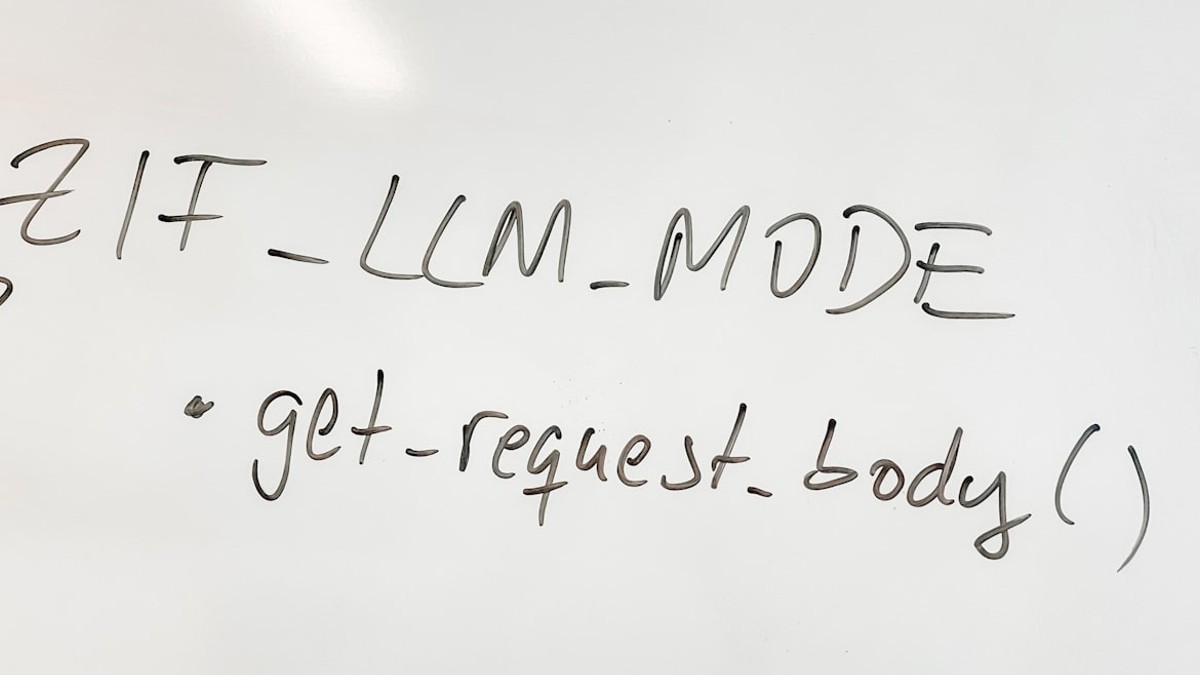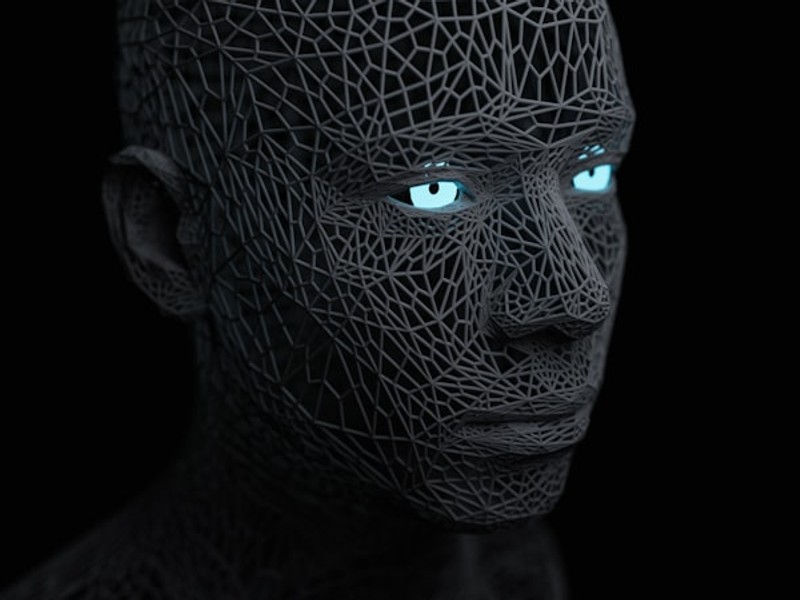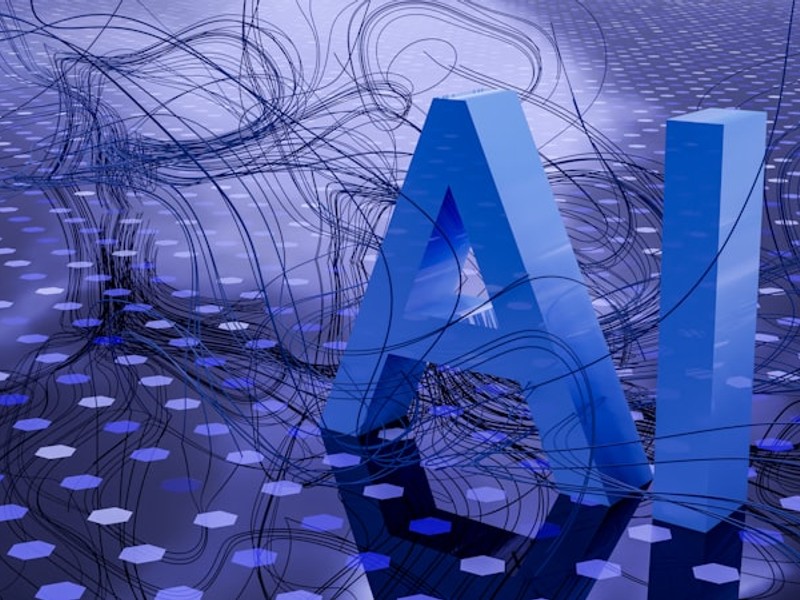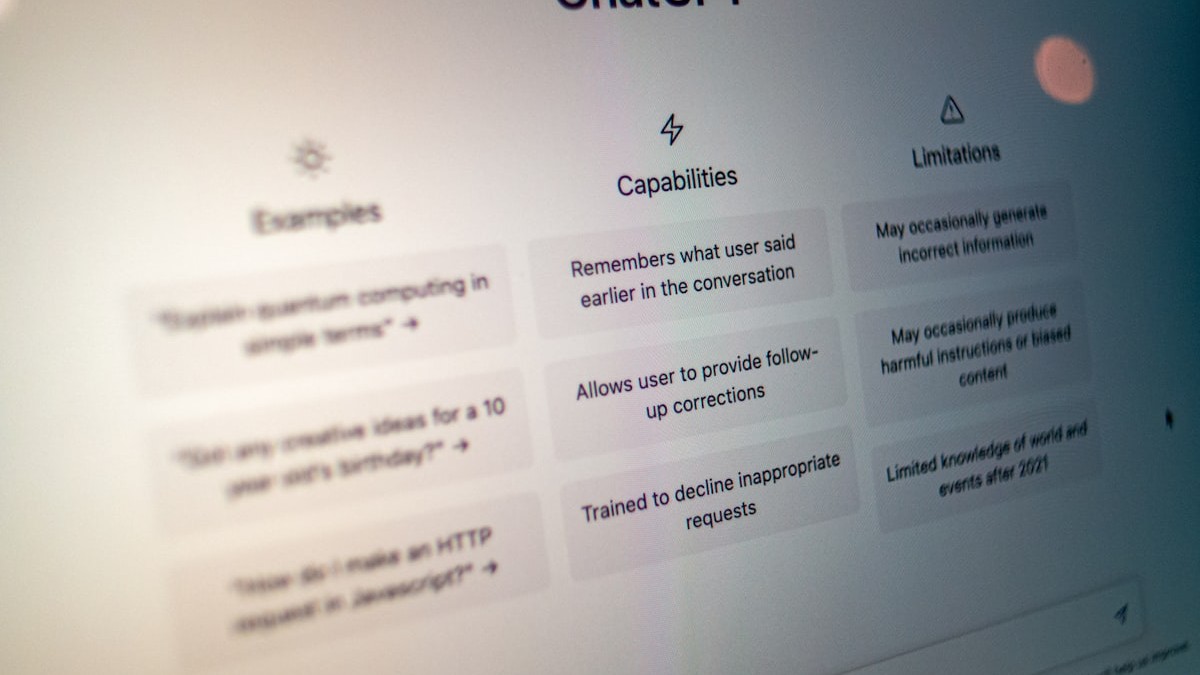Claude vs GPT-4: Deep Dive Comparison [2024]
The world of AI is rapidly evolving, and two names consistently rise to the top: Claude and GPT-4. Choosing the right large language model (LLM) for your specific needs can be a game-changer, whether you're automating tasks, creating content, or building innovative applications. This comprehensive Claude vs GPT-4 comparison will delve into the key features, performance benchmarks, pricing structures, and practical applications of each model, helping you make an informed decision in 2024. We'll explore their strengths and weaknesses, focusing on real-world scenarios and current trends.
1. Understanding the Basics: Claude and GPT-4

a white board with writing written on it
Before diving into the specifics, let's establish a foundational understanding of each model.
GPT-4 (Generative Pre-trained Transformer 4): Developed by OpenAI, GPT-4 is the successor to the widely popular GPT-3.5. It's a multimodal model, meaning it can process both text and images. GPT-4 is known for its improved accuracy, creativity, and ability to handle complex tasks. It's accessible through the OpenAI API and services like ChatGPT Plus.
Claude: Created by Anthropic, a company focused on AI safety, Claude is designed with a strong emphasis on helpfulness, harmlessness, and honesty (HHH). It excels at conversational AI, content creation, and summarization, with a focus on maintaining ethical guidelines and reducing bias. Claude is available through Anthropic's API and various partner integrations.
2. Core Features and Capabilities

a man with blue eyes and a black background
Both Claude and GPT-4 offer a wide range of features, but their core strengths lie in different areas.
GPT-4:
- Multimodal Input: Accepts both text and image inputs, allowing for more versatile applications.
- Advanced Reasoning: Demonstrates improved reasoning capabilities compared to previous GPT models, enabling it to solve more complex problems.
- Code Generation: Capable of generating code in various programming languages with high accuracy.
- Creative Content Creation: Excels at writing various creative text formats, like poems, code, scripts, musical pieces, email, letters, etc.
- API Access: Available through a robust API, allowing developers to integrate it into their applications.
Claude:
- Long Context Window: Boasts a significantly larger context window (up to 200K tokens, now expanding to 1 million tokens on certain models), enabling it to process and understand much longer documents and conversations. This is a significant advantage for tasks like legal document analysis or complex research.
- Emphasis on Safety: Designed with a strong focus on safety and ethical considerations, aiming to minimize harmful outputs and biases.
- Excellent Conversational AI: Known for its natural and engaging conversational abilities, making it ideal for chatbots and virtual assistants.
- Summarization Prowess: Excels at summarizing large amounts of text accurately and concisely.
- Reduced Hallucinations: Anthropic claims Claude has a lower tendency to generate factually incorrect or nonsensical information (hallucinations) compared to some other LLMs.
3. Performance Benchmarks: Accuracy, Speed, and Reliability

a computer generated image of the letter a
Comparing performance requires looking at various benchmarks and real-world use cases.
Accuracy: GPT-4 generally scores higher on standardized tests and benchmarks that measure accuracy and reasoning abilities. However, Claude's focus on safety and reduced hallucinations can make it more reliable in certain applications where factual correctness is paramount.
Speed: The speed of response depends on the specific API implementation and the complexity of the task. Generally, both models offer reasonable response times, but GPT-4 might be slightly faster for simpler tasks.
Reliability: Claude's design prioritizes reliability and safety, making it a strong choice for applications where consistent and trustworthy outputs are crucial. While GPT-4 has improved significantly, it can still occasionally produce unexpected or inaccurate results.
3.1 Quantifiable Performance Metrics
While direct comparison is difficult due to proprietary models, performance can be gauged by looking at standardized tests like the MMLU (Massive Multitask Language Understanding) and benchmarks focusing on coding abilities. GPT-4 generally performs better on coding benchmarks, while Claude excels in tasks requiring long-context comprehension and summarization.
4. Pricing and Accessibility: Which is More Cost-Effective?
Pricing models vary significantly between OpenAI and Anthropic.
GPT-4: OpenAI offers access to GPT-4 through its API, with pricing based on token usage. The cost varies depending on the specific GPT-4 model (e.g., GPT-4 Turbo) and the size of the input and output. ChatGPT Plus subscribers also have access to GPT-4 with usage limits.
Claude: Anthropic also offers API access with pricing based on token usage. They offer different Claude models (e.g., Claude 3 Opus, Claude 3 Sonnet, Claude 3 Haiku) with varying performance and pricing tiers. Claude 3 Haiku is designed to be the fastest and most affordable option.
4.1 Cost Considerations
Choosing the most cost-effective model depends on your specific use case and usage patterns. If you need to process large volumes of text with a long context window, Claude's pricing might be more favorable. For tasks requiring advanced reasoning and multimodal input, GPT-4 might be the better option. Always carefully evaluate the pricing structures and estimate your token usage to determine the most economical solution.
5. Use Cases and Practical Applications
Both Claude and GPT-4 have a wide range of potential applications.
GPT-4:
- Image Analysis: Analyzing images to extract information, generate descriptions, and answer questions.
- Code Generation and Debugging: Assisting developers with writing, debugging, and understanding code.
- Complex Problem Solving: Tackling complex problems that require advanced reasoning and logical deduction.
- Content Creation at Scale: Generating high-quality content for marketing, education, and entertainment.
Claude:
- Legal Document Analysis: Processing and summarizing lengthy legal documents with high accuracy.
- Customer Service Chatbots: Creating engaging and helpful chatbots for customer support.
- Summarization of Research Papers: Quickly summarizing complex research papers and identifying key findings.
- Content Moderation: Assisting with content moderation by identifying potentially harmful or inappropriate content.
5.1 Real-World Examples
GPT-4: A marketing agency uses GPT-4 to generate personalized ad copy based on customer demographics and preferences. A software company uses it to automate code generation for repetitive tasks.
Claude: A law firm uses Claude to analyze contracts and identify potential risks. A university uses it to summarize research papers for students. A customer service team uses Claude-powered chatbots to handle common inquiries.
6. Strengths and Weaknesses: A Side-by-Side Comparison
To further clarify the differences, here's a table summarizing the key strengths and weaknesses of each model:
| Feature | GPT-4 | Claude |
|---|---|---|
| Strengths | Multimodal input, Advanced Reasoning, Code Generation, Creative Content | Long Context Window, Safety Focus, Conversational AI, Summarization |
| Weaknesses | Higher Cost, Potential for Hallucinations | Can be Less Accurate on Some Reasoning Tasks |
| Pricing | Token-based, Varies by Model | Token-based, Varies by Model |
| Accessibility | OpenAI API, ChatGPT Plus | Anthropic API, Partner Integrations |
7. The Future of LLMs: Trends and Predictions
The landscape of LLMs is constantly evolving. Here are some key trends to watch:
- Increased Multimodality: LLMs will become increasingly capable of processing and understanding different types of data, including audio, video, and 3D models.
- Improved Reasoning and Problem-Solving: Future models will exhibit more sophisticated reasoning abilities, enabling them to solve complex problems with greater accuracy.
- Enhanced Safety and Ethical Considerations: Developers will continue to prioritize safety and ethical considerations, aiming to minimize bias and harmful outputs.
- Customization and Fine-Tuning: LLMs will become more customizable, allowing users to fine-tune them for specific tasks and industries.
- Integration with Real-World Applications: LLMs will be increasingly integrated into real-world applications, automating tasks, improving decision-making, and enhancing user experiences.
7.1 2024/2025 Predictions
We can expect to see further advancements in long context windows, allowing for even more complex document analysis and comprehension. Additionally, the race for efficiency will continue, with models becoming faster and more affordable. The integration of LLMs with other AI technologies, such as computer vision and robotics, will also drive innovation.
8. Making the Right Choice: Which Model is Best for You?
Ultimately, the best choice between Claude vs GPT-4 depends on your specific needs and priorities. Consider the following factors:
- Your Use Case: What tasks do you need the model to perform? Do you need multimodal input, advanced reasoning, or long context window capabilities?
- Your Budget: How much are you willing to spend on API usage? Compare the pricing structures of each model and estimate your token usage.
- Your Safety Requirements: How important is safety and reliability? If you need a model that prioritizes ethical considerations and minimizes hallucinations, Claude might be the better choice.
- Your Technical Expertise: Do you have the technical expertise to integrate the model into your applications? Both OpenAI and Anthropic offer extensive documentation and support, but some integration may require programming skills.
By carefully considering these factors, you can choose the LLM that best meets your needs and unlocks the full potential of AI.
Conclusion
In this Claude vs GPT-4 comparison, we've explored the key features, performance benchmarks, pricing structures, and practical applications of these two leading AI language models. Both Claude and GPT-4 offer powerful capabilities, but they excel in different areas. By understanding their strengths and weaknesses, you can make an informed decision and choose the model that best aligns with your specific requirements. Ready to harness the power of AI? Start exploring the APIs and documentation of both Claude and GPT-4 today!
FAQ
Q: What is the biggest difference between Claude and GPT-4?
A: Claude excels in long context window processing and safety, while GPT-4 offers multimodal input and advanced reasoning capabilities.
Q: Which model is more accurate, Claude or GPT-4?
A: GPT-4 generally scores higher on standardized accuracy benchmarks, but Claude is designed to minimize hallucinations, which can be important for reliability.
Q: Which model is more cost-effective?
A: The cost-effectiveness depends on your specific use case and usage patterns. Compare the pricing structures and estimate your token usage.
Q: Can Claude process images like GPT-4?
A: No, currently Claude is primarily a text-based model and doesn't support image input like GPT-4.
Q: Which model is better for creating chatbots?
A: Both models can be used for creating chatbots, but Claude's strong conversational AI capabilities and emphasis on safety make it a particularly good choice for this application.


